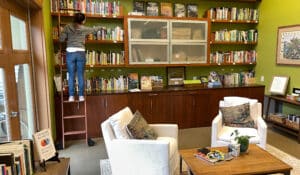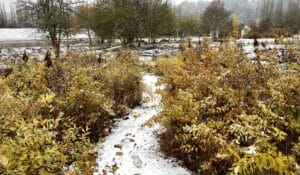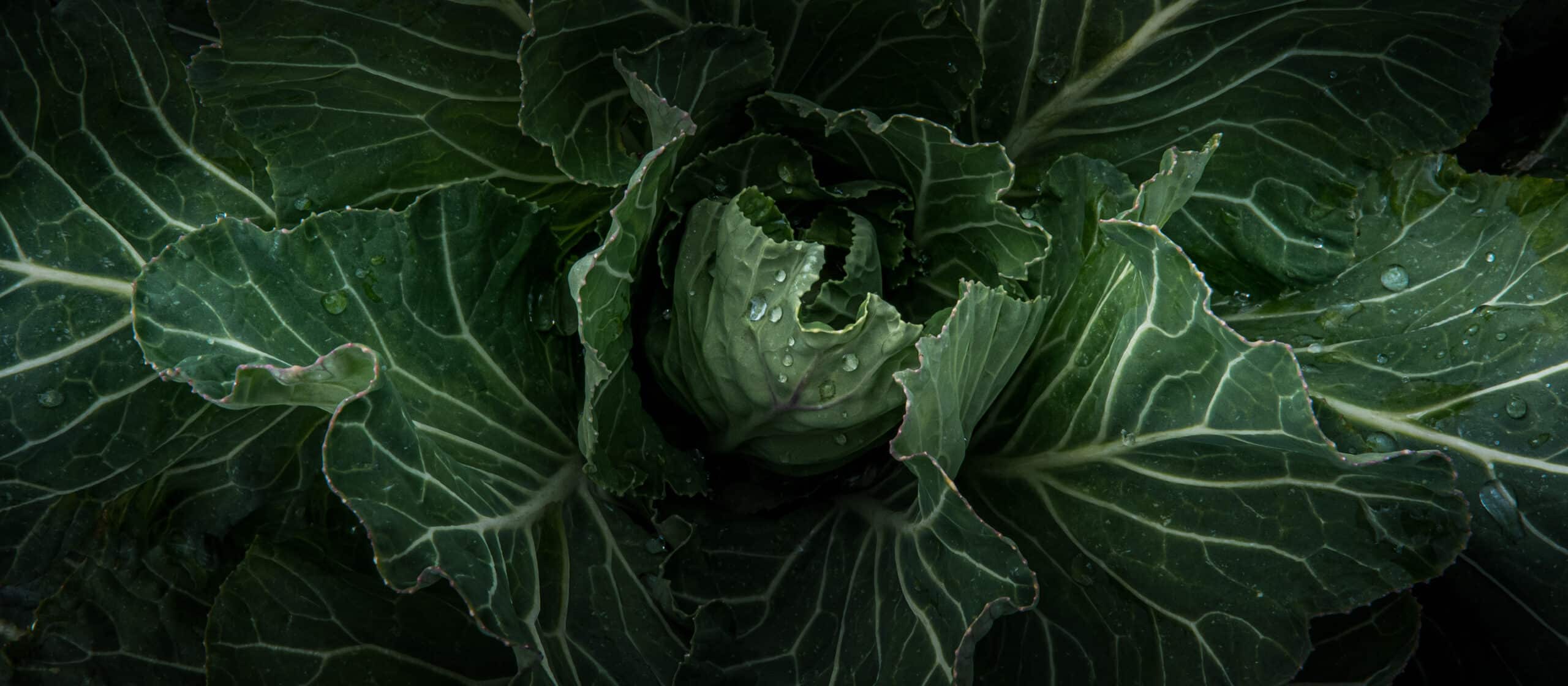
Rewilding the Green Building Berm
Rewilding the Green Building Berm
- posted on: June 12, 2021
- posted by: Rebecca Jordan
"*" indicates required fields

This article was written by Jess Chandler and Rebecca Jordan.
If you’ve been to the 21 Acres campus or been on a free green building tour, you might have seen the berm—the raised bank that protects the first floor of our building. That berm is doing more work than it looks at first!
At 21 Acres, everything we do seeks to integrate the built environment of our LEED Platinum Certified campus with the natural and wild spaces on the farm: reducing our carbon use, increasing carbon stored in healthy soils, and working toward a more integrated relationship with the environment. The berm on the south side of the building is no exception, and right now it’s blooming with spring wildflowers.
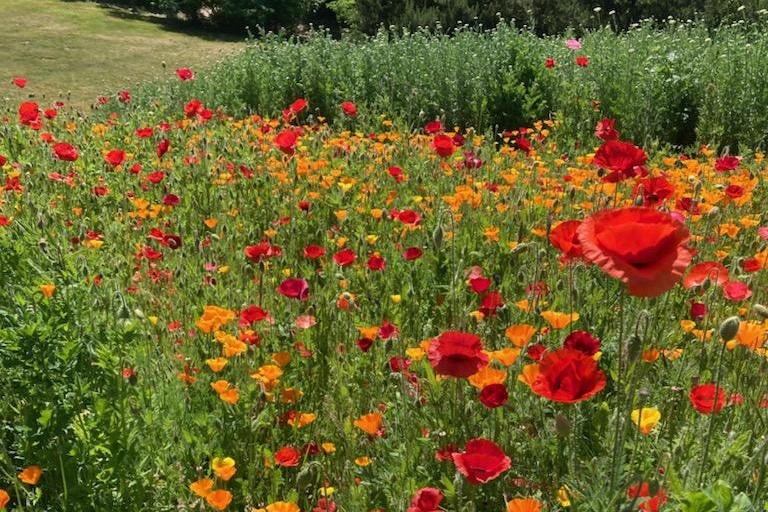
Integrating the natural and the built
Our restoration team has been working on increasing biodiversity on the relatively dry berm soil, which works to cool and insulate our building. In the berm is housed our ventilation tubes that give fresh air to the rest of the building as well as our greywater treatment systems.
The berm is a human-built feature of our campus, and is made of fill dirt—material that is often used in construction projects. As a result, the soil conditions are poor—but in this highly integrated space, that’s not necessarily a bad thing.
It turns out that wildflowers love low fertility soil and don’t need much in the way of irrigation. Extreme conditions—even wildfires or ice—can cause wildflower seeds to break dormancy and begin growing. The nutrient-deficient soil of the berm mimics many prairie and grassland ecosystems where wildflowers thrive. Plus, as a south-facing slope, the berm gets plenty of full sun.
We are working with these natural conditions in order to maximize the ecosystem services we can get from this built environment. Those primary ecosystem services? Pollinators.
Essential biodiversity and pollinators
Ecosystems thrive when a plethora of plants flourish. For ecosystems, greater biodiversity means greater resilience to changing climate factors. It’s part of the reason why monocropping and all-grass lawns can damage ecosystems—without a lot of choices for food foraging, specialist pollinators (those who only feed on a limited species of plants) die or would rather seek food elsewhere, affecting countless other parts of the food web. Considering we have pollinators to thank for one out of every three bites we eat, that can also affect human food sources.
At the 21 Acres farm, we work as a community to bolster biodiversity for a number of reasons. Beneficial insects not only pollinate our crops, ensuring a bountiful harvest; they also can serve as pest control. In fact, promoting pollinators is a Sammamish Valley-wide initiative, with a dedicated pollinator garden managed by volunteers in the center of our farm. Read more about other BEEvesting projects.
Pollinators love meadows. By scattering a variety of seeds and turning this otherwise dead dirt into a blooming native landscape, we’re supporting those bees working hard to pollinate and make honey on the farm.
Support pollinators: Create your own wildflower meadow
If you’re looking to create a wildflower meadow, the first thing you need to know is this: It’s not always going to be wildflowers! Right now our berm is blooming with poppies and other bright varieties, but you’ll also notice Roemer’s fescue, tufted hairgrass, blue wild rye and a few others. A successful seed mix for starting your meadow needs to be about 60% grasses that can thrive in soil that wildflowers have left behind. They’re symbiotic flora: annual flowers give native grasses a chance to become established, and the grasses in turn provide a healthy, long-term environment for beneficial insects (a big reason why traditional grass lawns don’t do anything for our essential biodiversity!)
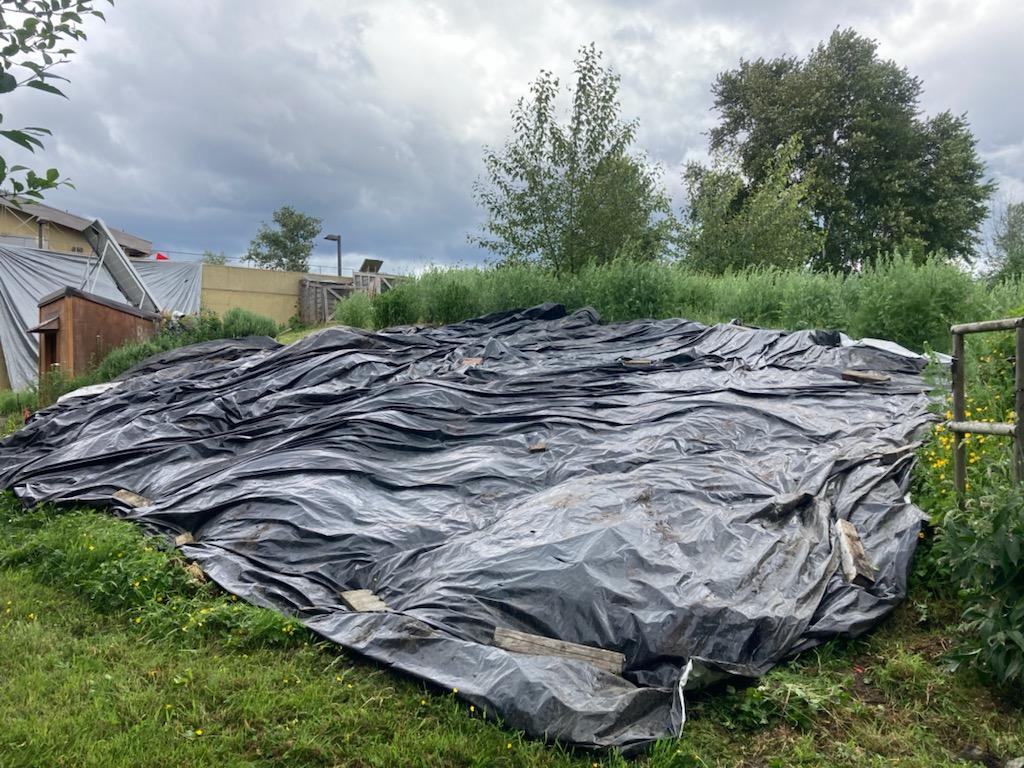
We’ve been using these Xerces Society methods as a guide for establishing wildflower meadows from seed. This is a multi-year process, and the blooms we’re seeing now are only due to last year’s planning. Last year we solarized the berm area—laying down a tarp so that the sun would naturally kill lingering weeds and weed seed on the lawn.
Using this manual from Klamath-Siskiyou Seeds as a guide, we selected seeds carefully based on the quality of the soil on the berm and what food sources we hoped to provide for beneficial insects. We also sourced seeds from Sunmark Seeds, Northwest Meadowscapes, and Silver Fall Seed. Here you can see California poppies, and soon we’ll also see western yarrow, lupine, goldenrod, and a couple varieties of clarkia.
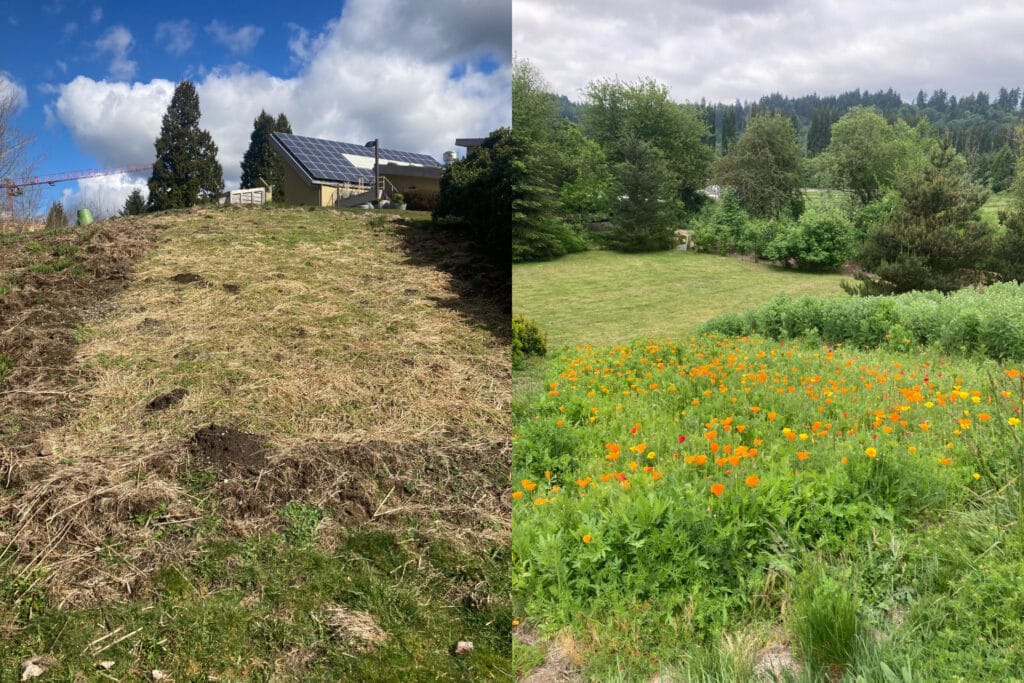
We are so excited to see blooms after a year of solarization and waiting all winter for seed dormancy to break.
Meadow landscapes are dynamic. We expect this space to change drastically from year to year as grass species establish and native flowers take hold. In the meantime, we—and the pollinators—get to enjoy the beauty of this native landscape.
About Jess Chandler
Jess is the Landscape and Restoration Specialist here on the 21 Acres campus. Jess works to improve the health of ecological systems on campus and find harmony between the built environment, farmland and the greater landscape. You might see Jess using her green thumbs to plant, remove invasives, propagate, and lead volunteer groups. Jess is a UW graduate of Landscape Architecture and has worked in horticulture for ten years.
About Becca Jordan
Becca Jordan is our Operations Manager at 21 Acres. Becca connects with visitors and keeps 21 Acres communications running smoothly. She has a variety of background experience, from science fiction writing and art to education, technical theatre, and costume design to horse care. She’s passionate about learning new things about the natural world and social and climate justice. In 2015 Becca participated in the Clarion Writer’s Workshop and graduated with an MFA from California Institute of the Arts in 2016. Becca originally hails from Escondido, California. Her favorite parts of the Pacific Northwest are the ancient trees and the plethora of life around every corner.










 back to blog overview
back to blog overview

